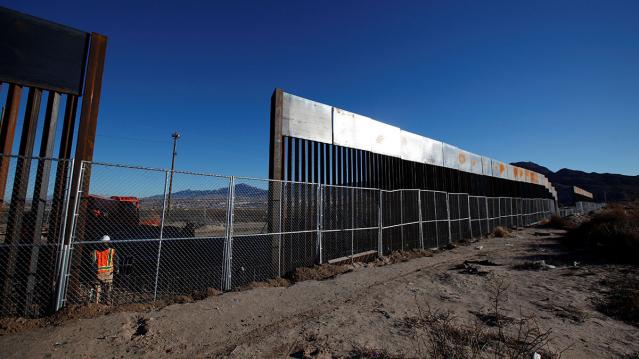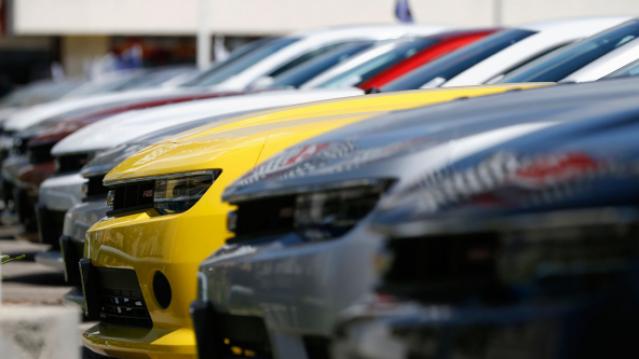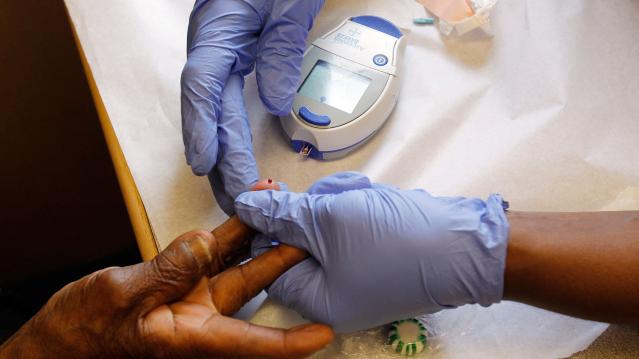Trump Diverting $3.6 Billion from Military to Build Border Wall

The Department of Defense has approved a plan to divert $3.6 billion to pay for the construction of parts of President Trump’s border wall, Defense Secretary Mark Esper said Tuesday. The money will be shifted from more than 100 construction projects focused on upgrading military bases in the U.S. and overseas, which will be suspended until Congress provides additional funds.
In a letter addressed to Senator James Inhofe, chair of the Armed Services Committee, Esper said that in response to the national emergency declared by Trump earlier this year, he was approving work on 11 military construction projects “to support the use of armed forces” on the border with Mexico.
The $3.6 billion will fund about 175 miles of new and refurbished barriers (Esper’s letter does not use the term “wall”).
Esper described the projects, which include new and replacement barriers in San Diego, El Paso and Laredo, Texas, as “force multipliers” that, once completed, will allow the Pentagon to redeploy troops to high-traffic sections of the border that lack barriers. About 5,000 active duty and National Guard troops are currently deployed on the border.
Months in the making: Trump’s declaration of a national emergency on the southern border on February 15, 2019, came in the wake of a showdown with Congress over funding for the border wall. The president’s demand for $5.7 billion for the wall sparked a 35-day government shutdown, which ended when Trump reluctantly agreed to a deal that provided $1.375 billion for border security. By declaring a national emergency, Trump gave the Pentagon the legal authority to move billions of dollars around in its budget to address the purported crisis. Legal challenges to the emergency declaration are ongoing.
Conflict with lawmakers: Congress passed a resolution opposing the national emergency declaration in March, prompting Trump to issue the first veto of his presidency. Democrats on the House Appropriations Committee reiterated their opposition to Trump’s move Tuesday, saying in a letter, “As we have previously written, the decision to take funds from critical military construction projects is unjustified and will have lasting impacts on our military.”
Majority Leader Steny H. Hoyer was more forceful, saying in a statement, "It is abhorrent that the Trump Administration is choosing to defund 127 critical military construction projects all over the country … and on U.S. bases overseas to pay for an ineffective and expensive wall the Congress has refused to fund. This is a subversion of the will of the American people and their representatives. It is an attack on our military and its effectiveness to keep Americans safe. Moreover, it is a political ploy aimed at satisfying President Trump's base, to whom he falsely promised that Mexico would pay for the construction of an unnecessary wall, which taxpayers and our military are now being forced to fund at a cost of $3.6 billion.”
A group of 10 Democratic Senators said in a letter to Esper that they “are opposed to this decision and the damage it will cause to our military and the relationship between Congress and the Department of Defense.” They said they also “expect a full justification of how the decision to cancel was made for each project selected and why a border wall is more important to our national security and the well-being of our service members and their families than these projects.”
Politico’s John Bresnahan, Connor O'Brien and Marianne LeVine said the diversion will likely be unpopular with Republican lawmakers as well. Republican Senators Mike Lee and Mitt Romney expressed concerns Wednesday about funds being diverted from their home state of Utah. "Funding the border wall is an important priority, and the Executive Branch should use the appropriate channels in Congress, rather than divert already appropriated funding away from military construction projects and therefore undermining military readiness," Romney said.
The Pentagon released a list of construction projects that will be affected late on Wednesday (you can review a screenshot tweeted by NBC News’ Alex Moe here).
An $8 billion effort: In addition to the military construction funds and the money provided by Congress, the Trump administration is using $2.5 billion in drug interdiction money and $600 million in Treasury forfeiture funds to support the construction of barriers on the southern border, for a total of approximately $8 billion. (More on that here.)
The administration reportedly has characterized the suspended military construction projects as being delayed, but to be revived, those projects would require Congress approving new funding. House Democrats have vowed they won’t “backfill” the money.
The politics of the wall: Trump has reportedly been intensely focused on making progress on the border wall, amid news that virtually no new wall has been built during the first two and a half years of his presidency. Speaking to reporters at the White House Wednesday, Trump said that construction on the wall is moving ahead “rapidly” and that hundreds of miles will be “almost complete if not complete by the end of next year … just after the election.”
Craigslist Car Scams Are on the Rise, Especially in Midwest

An insurance group is warning consumers of a widespread scam in which fraudsters are buying cars on Craigslist with bogus checks.
The National Insurance Crime Bureau has identified nearly 100 instances throughout the Midwest of Craigslist car sales in which the buyers used fake bank checks.
“These scams are well organized and have all the appearances of being legitimate,” NCIB President and CEO Joe Wehrle said in a statement. “But in the end, the criminal gets the car and the sellers or their financial institutions are left on the hook for thousands of dollars still owed on the car.”
Related: A New Vicious Scam Targets Desperate Homeowners
The scam appears to be especially prevalent in states where vehicle owners retain the title despite an outstanding lien. NCIB, a nonprofit supported by the insurance industry, advises car sellers never to sign over the title until they have the money for the sale in hand, even if that means waiting a week or more for a check to clear.
Craigslist offers its own list of tips to avoid scams. Remember, the online marketplace offers no guarantees regarding items bought or sold via its site and little recourse if you are the victim of a scam.
The site’s No. 1 tip is to do all transactions in person. A growing number of police stations now offer dedicated space for people meeting in person for transactions they’ve agreed to online.
Those with information about insurance fraud or vehicle theft can anonymously report it by calling 800-835-6422 or texting keyword “fraud” to TIP411.
15 Restaurants Offering Free Food for Moms on Mother’s Day

Your Mom was the one who taught you to head straight for the clearance racks. Show her how much you've learned by taking her out for some deliciously cheap eats before taking a free garden tour.
Related: 10 Worst States for Working Mothers
Mother's Day Freebies 2015
- Beef O'Brady's: Free Meal with purchase of equal or greater value up to $10
- Billy Sims BBQ: Free Single Meat Sandwich, Side and Drink
- Brick House Tavern & Tap: Free Brunch Entree with Entree Purchase (reservations required)
- Chuck E. Cheese's: Free Individual Thin & Crispy Pizza with $29.99 purchase of Large 1 Topping Pizza, 4 Drinks & 30 Tokens (requires printable coupon, exp. 6/1)
- Corner Bakery: Free 6 Pack Bottoms Up Bundts with Entree Purchase (printable coupon, exp 5/11)
- Fogo de Chao: Free Lunch or Dinner on Next Visit for Moms who dine on Mother's Day
- Hooters: Free Meal with Drink Purchase (up to $10.99)
- Hurricane Grill & Wings: Free Dessert with Entree Purchase
- McCormick & Schmick's: Free Chocolate-Covered Strawberry with your order
- National Public Gardens Day: Free admission 5/8, with many activities continued through Mother's Day
- Orange Leaf: Free 8-oz. Froyo
- PDQ: Free Combo Meal with purchase of a Kids/Combo Meal
- Shoney's: Free Slice of Strawberry Pie with your order
- Spaghetti Warehouse: Free Strawberry Lemonade and Surprise Gift
- Tijuana Flats: Free Entree (must show offer to redeem)
As always, local participation may vary, so call ahead to check - and then make reservations if you can.
This article originally appeared in The Brad's Deals Blog.
Read more from The Brad's Deals Blog:
6 Things You Should Never Waste Your Money
37 Things You Should Always Keep in Your Car
Is Vision Insurance Worth it For You
This Disease Hikes Health Care Costs By More than $10,000 a Year

Medical professionals and economists have been worried about the growing prevalence of diabetes for years. A new report shows their concerns are well placed. In 2013, the per capita health care bills of consumers with diabetes was $15,000, nearly 71 percent ($10,700) higher than those without the disease, according to the Healthcare Cost Institute.
The brunt of those bills are borne by health care providers, but consumers with diabetes have per capita out-of-pocket costs of $1,922, compared to just $738 for those who do not have diabetes.
For those under the age of 65, health care expenses grew an average 4.1 percent from 2012 to 2013, but the increase was even higher among children, who saw expenses rise 7 percent from 2011 to 2012 and then another 9.6 percent from 2012 to 2013.
Related: Diabetes Detection Up in Pro-Obamacare States
“There has been extraordinary growth in health spending for children with diabetes,” HCCI senior research Amanda Frost said in a statement, citing branded insulin as one factor in the increase.
For children, the costs go beyond medication. A 2012 study in Health Affairs found that people who develop diabetes before age 30 make less money than their peers, are more likely to drop out of high school and less likely to attend college.
One of the most widespread chronic diseases in the United States, diabetes care consumes about 10 percent of U.S. health care spending, according to a study by the University of Michigan.
This College Choice Could Make You $3Million Richer

The differences in starting salaries for STEM majors versus those who study the humanities have been widely publicized. Now, a new study looks at how those differences add up over a lifetime of earnings – and the results are staggering.
The lowest paid graduates, early childhood education majors, earn just $39,000 annually mid-career, while the highest paid petroleum engineering majors, make an average of $136,000 per year. Over a career, that difference amounts to more than $3 million, according to the report The Economic Value of College Majors by economists at Georgetown University.
Among the major fields of study, architecture and engineering students earn highest average salary--$83,000 per year, and education majors earn the lowest--$45,000 per year.
Related: 10 Public Universities with the Worst Graduation Rates
The study finds that generally it’s still worth it to go to college. The average bachelor’s degree holder makes $1 million more over a lifetime than a person with just a high school diploma.
A separate report released last fall by the Federal Reserve Bank of New York found that the value of a bachelor’s degree has reached an all-time high of around $300,000. Researchers found that it takes about 10 years to recoup the cost of a degree, a historically low level, down from close to 25 years in the late 1970s and 1980s.
So those education majors should still go to college, but they might be smart to look for more moderately priced options and to be more wary about taking on debt than their engineering peers.
Putin’s Shiny New Tank Breaks Down

According to news reports, including the Associated Press, the pride of the Russian military – Vladimir Putin’s T-14 Armata tank – broke down in the middle of Red Square on Thursday during a practice run of the Victory Day parade scheduled for Saturday. The state-of-the-art tank was one of eight rolling through Moscow Thursday morning when it unexpectedly came to a halt while the others rolled on.
According to the AP, the soldiers on hand first tried to tow the tank away, but were unsuccessful. After about 15 minutes, the problem was apparently solved, and the tank rolled off under its own power.
Related: 7 New Weapons in Vladimir Putin's Arsenal
An executive of the company that produced the tank told the AP that, despite the apparent attempts to tow it away, the tank had not broken down and was functioning properly.
The T-14 is meant to be the main battle tank that will carry the Russian Army into the rest of the 21st century. Its unmanned turret is controlled remotely by crew members safely inside an armored compartment in the body of the tank. It has advanced weapons system and armor, and is believed to be a match for any tank currently in service with North Atlantic Treaty Organization forces.
The T-14 has been written about extensively in the government-controlled Russian press, and its public unveiling is being treated as a major event. In addition, the parade Saturday will be watched not only by millions of Russians, but also by dozens of foreign dignitaries on hand to hel celebrate the 70th anniversary of the end of World War II. That means any malfunction of the tank during the actual parade on Saturday would be terribly embarrassing to the Kremlin.
